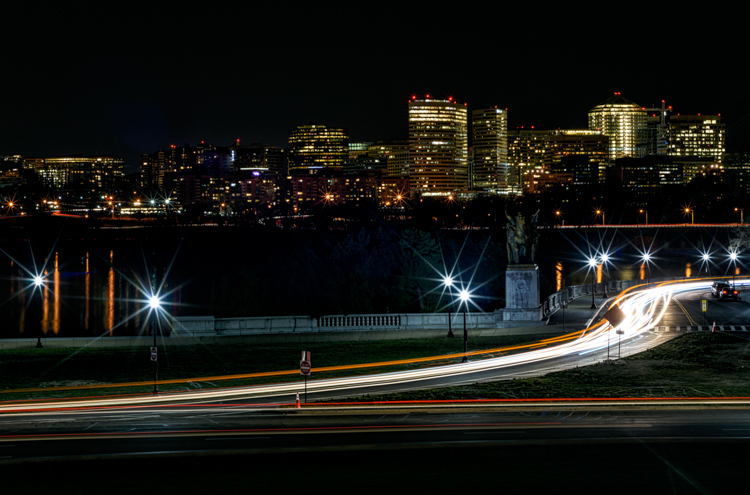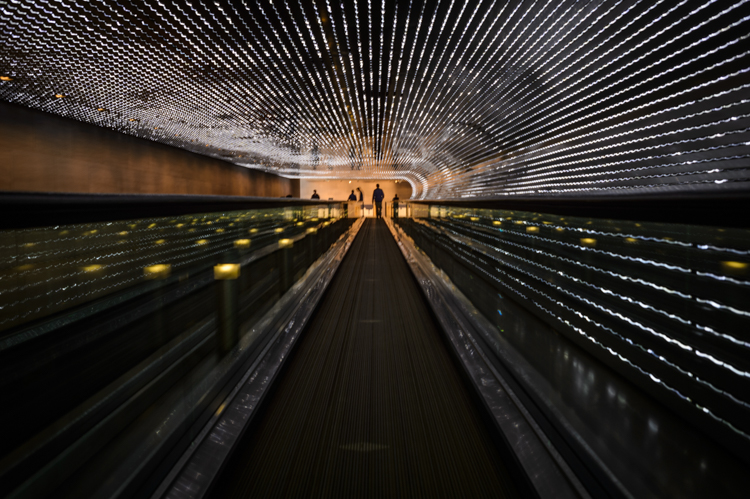 |
| Uwe Moebus, Hasselblad’s head of sales for Europe and MD of Germany. Photograph by Damien Demolder. |
It has been interesting watching Hasselblad’s fortunes over the last couple of decades. When I began writing about cameras the V system wasn’t called the V system, and the company’s medium format film bodies were very popular with high-end amateurs as well as with professional photographers. I suspect that even in those days it was amateurs that contributed the majority of Hasselblad’s income, and the company was revered for quality, craftsmanship and very high standards. It seems Hasselblad is aiming to recapture that valuable amateur market once again and the X1D II 50C is the camera the company hopes will bring droves of non-professionals back to its door. The company’s product catalogue has been dominated by very high priced digital medium format models for quite a period of time, which has kept the majority of non-professionals away.
During the launch event for the X1D II 50C in London I got to speak to Hasselblad’s head of sales for Europe and MD of Germany, Uwe Moebus, to ask him how this relatively low-cost model came about and to find out what Hasselblad aims to achieve in the future.
‘We have learnt that we should launch products when they are ready and fully developed’
I asked Moebus what the company has learnt since the launch of the original X1D, and how that learning has been implemented in this new model and the way the company operates. ‘We have learnt that we should launch products when they are ready and fully developed for the market. We have also learnt a lot from our customers over last three years about what should be improved and we tried to bring this into the new camera.
Start-up time was an issue from the beginning – this is improved now – frame rate needed to be improved – everybody wants faster frame rates, though this is difficult with medium format because of the amount of data – and some people weren’t happy with the previous viewfinder. These things were okay in the first camera, but now they are much better and enhanced in this mark II version.’
Attracting amateurs again
We chat about how it had been some time since Hasselblad had dealt with the amateur market when the X1D came out and how things had changed since the days the film bodies were at their height. ‘Everybody thinks that the V system Hasselblad were only for professionals. The camera was about £5000 at the time, and actually almost two thirds of users were amateurs. So, working in this market is not so new to us. But in between, when medium format went digital, things became so much more sophisticated, complicated and expensive that our whole market turned around to the point that over 90% was professional. The number of cameras we made dropped a lot and the price went up a lot – and we had a much smaller customer base.’
‘There are fewer professional photographers and it is getting harder for professionals to make money’
‘Now though we will be turning that situation back again. There are fewer professional photographers and it is getting harder and harder for professionals to make decent money. So Hasselblad needed to look to the future and ask if those customers would continue to use expensive medium format cameras, or would they look at full frame cameras? We decided that ‘no’ many wouldn’t continue to spend on high priced medium format systems and that we needed to take a different route. We will continue to develop our H system, which is very high-end and for pros, but the new X1D will open a new market for us. Maybe we can go back to [how things were in] the 80s and have a lot of amateur customers.’
 |
‘The purpose of this new model and its lower price is to broaden our market, to put the company on solid ground. We can do this by having more products: this X series, the H series, having a new V series with the CFV attached and the new 907X – this will allow us to develop our position in the market. Looking back ten years we only had the H system. Now though we can attract a new customer group. £5500 is still a lot of money but it is a lot less than these cameras used to be, and you can have a camera and a lens for below £10,000. This is a much bigger market for us.’
New electronics
The main changes in the new body are centered around performance and speed of operation, all of which have been achieved using a new faster processor and a whole new electronics system. Moebus wouldn’t say exactly how much faster the new processor is, but it has cut start-up time almost in half, has produced reduced shutter lag and black-out time between frames. It can also run the 60fps EVF while also adding 30% to the maximum frame rate – though 2fps to 2.7fps doesn’t sound all that impressive until you think of the data that is being moved. To cope with this new processor the camera has had a complete electronic make-over inside with an entirely redesigned system.
The new processor also helps the auto focus run more quickly, speeding up acquisition and tracking. Moebus said the system only has to read the area of the sensor beneath the AF points rather than reading from the whole sensor, so it is efficient and operates quickly.
‘We have further optimized the power management and the heat management systems’
‘New firmware also helps to run the camera more efficiently’, says Moebus, ‘and new systems are used to deal with the heat. We fixed the firmware in the original X1D to change the way the camera was always running all its systems all of the time, so that then only systems that were needed would be on while they were in use. The same is true in the X1D II but we have further optimized the power management and the heat management systems to make the camera work even better.’
The body is almost exactly the same on the outside other than the slightly remoulded grip and the much bigger rear screen, and it uses the same materials in its construction.
Evolution, but the same camera
I asked Moebus why this model is called a mark II and not X2D, for example. ‘There is more to come’ he joked. ‘This is an evolution of the original camera. There are some significant changes but it still looks like an X1D. It is not a completely new camera, which is why it has the same name.’ He wouldn’t be drawn on what would have to change to make it a revolution and thus completely new camera, rather than an evolution. I tried!
Hasselblad was never tempted to use a higher resolution sensor in this model, according to Moebus. ‘This camera was designed to have a 50MP sensor, and we were clear on this from the start. The X1D is a portable tool that captures high end images while maintaining is size and low weight to make it the most compact medium format camera on the market. The sensor we have used in the X1D II 50C is exactly the same one as is used in the original model.’
 |
I was surprised at first that Hasselblad has placed so much emphasis on being able to record JPEG images – and that were was so much demand for more JPEG options. Moebus tells me that many Hasselblad users want to be able to shoot JPEGs and not have to spend time processing them afterwards. ‘Most professionals need raw data of course, but there is a market that requires JPEG only, so we have included the ability to shoot one file type or the other, or both at the same time. With the more accessible price of the camera we expect more amateurs to use it, and some of them just want to produce wonderful images straight from the camera. The X1D II 50C immediately delivers very nice JPEGs.’
I suppose that Fujifilm has also gone to some lengths to cater for the JPEG market in its medium format bodies, but it does too in the X series models. I was just curious that anyone would pay for a Hasselblad X1D and lenses and then record JPEGs, but having just seen the photo staff from luxury department store Harrods at the press briefing it clicked for me that I might not be their typical customer. Like Leica, Hasselblad has many wealthy fans who want a nice looking camera for their holiday snaps. Nothing wrong with that I suppose.
Cost reduction
Even though the X1D II 50C costs a good deal more than the average amateur camera, its price is significantly lower than the launch price of Mk I version – and the price of the Mk I version the day before the Mk II was announced. So, how was this price arrived at?
‘We have optimized production processes and our supply chain’ explains Moebus. ‘When we began making the X1D we were buying in lower quantities, but now we are buying more and in bulk. Buying more brings the unit cost down, so now we can make an even better camera for a lower price. These changes have not come about suddenly because the Mk II is an easier camera to make, but as a progressive journey since the beginning of the X1D.’
‘The whole organization has had to migrate to a situation where we are making many more products’
Hasselblad was caught out by the demand for the X1D and really struggled at first to produce enough units to meet its orders. Since then though the company has boosted its production line, its manufacturing processes and assembly to deal with much larger volumes than it had expected. ‘This hasn’t happened in a split second’ says Moebus ‘but the whole organization has had to migrate to a situation where we are making many more products. We had to do this without dropping quality as that would undermine the company and the brand. At Hasselblad image quality is everything. Everyone wants a fantastic picture. If you sacrifice this you aren’t going the right way. It was a stretch, but now we can make better cameras at a lower price.’
‘We are now in a position to be able to meet demand for the X1D II 50C. We are assuming it will be a popular camera, because of the features and the price, so we are prepared. We employed more people to meet demand for the Mk I so we are already in a good position. We will also be able to make the 907X and CFV II 50C on the same premises and cope with demand when the time comes. We are used to making digital backs, as we have been doing so since the merger with Imacon and also for the H system. The CFV II isn’t a new challenge for us to make, so we will be able to cope. The 907X is a nice slim camera with some mechanics and electronic connectors. We will be able to make an appropriate amount to feed the market. That shouldn’t be too complicated.’
 |
Moebus isn’t prepared to discuss the price of the CFV II 50C or the 907X unfortunately, and argues that the original CFV wasn’t expensive – it was $ 15,000! We might hope though that with efficiencies in production and supply chain the cost of the CFV II 50C might synchronize with the drop we’ve seen in the X1D II 50C.
Moebus points out that the 907X camera and the CFV II 50C will have a whole system waiting for them once they are launched. ‘Often manufacturers have only a few lenses when a new camera system is introduced but the 907X already has nine native X lenses, and will also be able to work with H, V and XPan lenses – we have a complete line-up.’
Half an eye on the competition
We’d already discussed how Hasselblad reduced costs in the making of the X1D II 50C, but I wanted to know if the camera’s new lower price was a response to Fujifilm’s activities with its GFX series. ‘We are both in the medium format mirrorless market, so of course we look at what other people are doing in the same field. Primarily though we are looking at ourselves and thinking about what we need to bring to the market. We aren’t interested in copying and we don’t strive to make cameras that match others. That’s why the X1D is the way it is. The current price of the X1D II 50C reflects that we wanted to make the camera accessible to a larger audience, not because of Fujifilm’s pricing.’
‘We will listen to our current customers’
Hasselblad has been quite good at offering trade-in programs to encourage its H system users to move up the ladder to the newest equipment, but Moebus says there are no similar programs in place for the X series. But, he says ‘We will listen to our current customers’ meaning perhaps that if there is enough demand the company might consider it. The issue for some is that the new body costs less than the original did the day before the launch of the upgrade, so if you’d bought the original model the week before you might feel a bit annoyed. Moebus said the company was aware that this might be an issue, but that the most important thing was to make the new model accessible.
The best lens ever
After speaking to Moebus I was able to chat to other technical staff about the new 35-75mm F3.5-4.5 zoom lens. Hasselblad claims it is the best lens the company has ever made, so I asked what it was in particular that made it so. The answer it seems is MTF. Charts were produced that show the lens to perform to the sort of standard you’d expect from a prime lens – and much better in many cases.
 |
Comparing the MTF at various focal lengths with the prime versions the company makes it is clear to see, in theory at least, that the 35-75mm will provide a prime-lens experience for those who don’t need super-wide maximum apertures. Even at the long end though the maximum F4.5 aperture is comparable to moderate telephoto lenses from past medium format systems – though with the X1D’s smaller sensor the ability to achieve differential focus will be a little more limited.
On its own the lens seems very expensive, but taken in the context that it really could replace three or four prime lenses it might begin to sound like a very good deal. In full frame terms the angles of view offered by the zoom are those we’d expect from a 28-60mm, so it encompasses 28mm, 35mm, 50mm and 60mm lenses. Our only quality measure at the moment is just the manufacturer-provided MTF of course. How that and the other characteristics will translate into real life image quality we will have to wait and see.
Forward to go backwards
This clutch of product announcements from Hasselblad creates a very positive air around the company and its future. Even with the original X1D the company seemed in a much more precarious position as the shock at the size of the order book generated so many issues of its own. But the company survived that and has grown, and now seems on a much better footing – production is sorted out, buying can be done in more efficient volumes and Hasselblad is geared up for meeting its new enlarged market with popular products that more people can enjoy. Are the good old days back I wonder? Perhaps not just quite, but things are looking rosy for the future.
Articles: Digital Photography Review (dpreview.com)


















